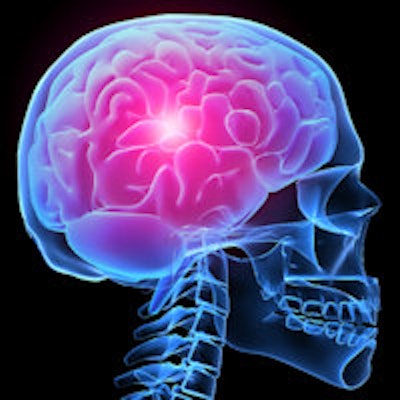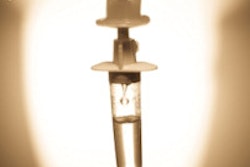
Key markers from electroencephalography (EEG) may help track the depth of anesthesia patients' experience with propofol, according to a new study. The researchers hope their findings may lead to more accurate propofol titration and better brain monitoring during anesthesia.
The study evaluated the drug concentration in patients' blood and their level of consciousness as they moved between baseline, mild sedation, and moderate sedation (PLOS Computational Biology, January 14, 2016).
"Our findings suggest that there are two separable components of the process underlying the transition to consciousness during general anesthesia: the loss of behavioral responsiveness and the concentration of drug in the blood," lead study author Srivas Chennu, PhD, a senior research associate in clinical neurosciences at the University of Cambridge, told DrBicuspid.com. "We identify different EEG signatures that correlate with these components."
Measuring consciousness
While inducing unconsciousness is prevalent in clinical practice and propofol is the most commonly used anesthetic drug, many practices don't track the depth of a patient's anesthesia by using tools such as surface electroencephalography. However, there needs to be a way to accurately track such depth, because patients continue to suffer intraoperative awareness, which results in pain and distress, according to the study authors.
To understand the factors that contribute to the varying effects of propofol on patients, Chennu and colleagues compared resting-state EEG measurements and the propofol concentrations in the blood of 20 healthy volunteers. Their goal was to monitor changes as the volunteers progressed from baseline to mild sedation to moderate sedation, then back to baseline during recovery.
“This set of results ... could contribute to reliable applications of brain monitoring for tracking and accurately modulating consciousness with anesthetics during routine surgery.”
The researchers found that patients' robustness of alpha connectivity networks before sedation predicted their later susceptibility to propofol. This was true even for two individuals who were behaviorally indistinguishable at first but ended up requiring a varying amounts of propofol for the desired sedation.
"It is important to note that this latent variability in the state of alpha connectivity at baseline could be detected despite the lack of any significant differences in behavioral performance or alpha power at that time," the study authors wrote. "This set of results, if replicated and verified in the clinical context, could contribute to reliable applications of brain monitoring for tracking and accurately modulating consciousness with anesthetics during routine surgery."
The researchers also identified several EEG markers that separated consciousness from drug exposure, including the onset of frontal alpha power.
"The observed changes in alpha networks due to sedation cannot be explained as a shift of alpha power and connectivity from posterior to anterior areas," they wrote. "Rather, our results ... point toward a broader understanding of characteristic signatures of connectivity in alpha networks as potentially reliable correlates of reportable consciousness."
Making it clinically relevant
While the study had well-documented materials and methods, it only included 20 volunteers and cannot yet be deemed clinically relevant. However, the research did identify consistent markers for the loss and recovery of consciousness, and if the results are verified in additional contexts, they could prove helpful for dentists and other healthcare professionals to more accurately administer propofol, according to the authors.
"A surprising and unexpected finding in our data was that we could explain why some of our participants became unresponsive, while others remained responsive, based on their EEG activity measured at baselines before the administration of propofol," Chennu said. "This result, if verified in clinical context, could be useful for more accurate drug titration in medical practice."



















